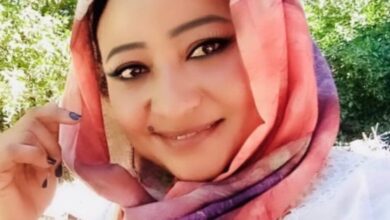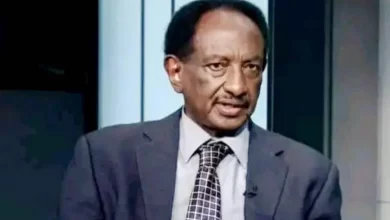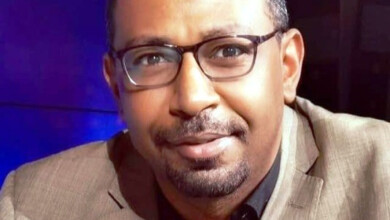The Janjaweed: From authoritarian utilization to political positioning
Dr. Al-Waleed Adam Madibou

“Adherence to history as destiny is one of the most dangerous forms of stereotyping, because it transforms injustice from a critiqueable event into an unalterable fact.”
—Edward Said, Orientalism
Attempting to understand the Janjaweed phenomenon as a “universal human phenomenon” rooted in human heritage, as some recently circulated anonymous statements suggest, represents a dangerous bias toward (essentializing through historicizing). In the name of civilizational comparison, the phenomenon is removed from its contemporary political and economic context, and presented as a continuation of primitive behavior rooted in the “human margin,” as if the Janjaweed were merely a reproduction of the Tatars, Vandals, or Mongols, passing through historical space as an irreversible fate, and as if Sudan were an eternal theater of chaos from which there is no escape.
However, this simplistic contemplation completely ignores the structural conditions that led to the emergence and expansion of this phenomenon in modern Sudan. As the latter isn’t the result of an ethnic upsurge, nor an expression of “untamed Bedouin nature,” but rather a direct product of the transformations of the post-colonial State, which -in turn- reproduced coercive centralization and violent marginalization in its geographical and social margins.
The Janjaweed were politically produced, financed, armed, and ideologically framed within a clear authoritarian project, with a primary goal of dismantling the resistance (rebel Movements) in Darfur and drying up the sources of social and cultural rebellion. As Michel Foucault described the tools of “biopower,” the State used the Janjaweed for control and discipline, not as outlaws in the eyes of the State, but as an extension of it.
To say that “The Janjaweed are a recurring human phenomenon” is, at its core, a discourse of decontextualization, a discourse that Edward Said warned against in his book Orientalism, where he explained that the most dangerous thought an intellectual can implement is to present violence and victimhood as a cultural or geographical fate. By this logic, the Janjaweed transform from a functional entity within the authoritarian system into chaotic creatures, removed from history, the State, the law, and responsibility. The crimes committed in Darfur, South Kordofan, and Khartoum are then reduced to mere random bumps in the jungle narrative, not what they are in reality: An organized project of violence with a clear class-based, ethnic, and political dimension.
Indeed, this type of discourse reproduces the logic of cognitive colonialism, portraying the people of the South as “naturally savages,” incapable of writing their own history but being drawn into it. This is the same thesis refuted by Frantz Fanon, who demonstrated that colonial violence isn’t limited to the occupation of land, but rather occupies consciousness and produces local intellectual elites who justify oppression not in the name of self-interest, but in the name of “identity,” “nature,” and “heritage.”
Herein lies the danger of the fundamentalist discourse: It confuses analysis with justification. Instead of dissecting the Janjaweed as a complex social phenomenon resulting from the alliance between the central authority and the military feudal system, they are presented as a repeated “historical echo,” thus, the perpetrator is erased, and the victim is reconstituted as part of a charade, for which no party is held responsible or accountable.
However, a deeper contemplation isn’t necessarily limited by boundaries of the moment heralding the authoritarian use of Janjaweed, but rather extends beyond it to encompass the moment of transformation today: When those who were created on the margins of the State began to transcend the logic of military employment to political positioning. Thanks to the recent confrontation with the Salvation (Inqaz) Group, as the former has begun to recognize its place outside of the center, not as a tool, but as an actor. In this sense, some of its members have transformed from mere mercenaries to seekers —whether genuinely or driven by self-interest— of new rural alliances and of an opportunity to reshape the equations of power.
Herein lies the paradox: The Janjaweed phenomenon, born within the confines of the authoritarian State, may be on the path to breaking free from its former dependency, becoming an actor in a new struggle over national identity, citizenship, and resource distribution. This phase requires a new reading, one that transcends condemnation and doesn’t fall into the swamps of flimsy justifications (represented by the phrase “Arab diaspora”), but rather seeks to understand the phenomenon in light of the balance of social power, the structure of identity, and the discourse of resistance.
In conclusion, as we aim to reexamine the Janjaweed phenomenon, we are called upon to deconstruct it not simply as a combatant group, but as an indicator of the Sudanese State’s crisis in its relationship with its margins, and of the national project’s failure to accommodate pluralism, diversity, and marginalization. Otherwise, we risk reproducing more violent phenomena, not because they are inherent in our “culture,” but because we have failed to confront our own political structure.
May 17th, 2025





